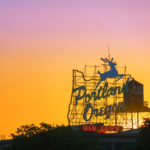Discovering Which Ski Resort Gets the Most Snow
If you’re a skiing enthusiast, there’s nothing quite like hitting the slopes when they’re covered in fresh, powdery snow. The thrill of carving through deep, untouched powder is an experience that every skier dreams of. But not all ski resorts are created equal when it comes to snowfall. Some resorts consistently receive more snow than others, creating ideal conditions for powder hounds. In this article, we will dive into the world of snowfall and explore which ski resorts are known for getting the most of the white stuff.
Understanding Snowfall in Ski Resorts

Before we can determine which ski resorts receive the most snow, it’s important to understand the science behind snowfall. Snowflakes are formed when water vapour freezes around particles in the atmosphere. The size and shape of snowflakes can vary depending on temperature and moisture levels. When these snowflakes fall to the ground, they accumulate and create the beautiful blanket of snow that skiers and snowboarders love.
The Science of Snowfall
The process of snowfall is influenced by several factors, including temperature, moisture content in the air, and the presence of precipitation-producing systems. In regions where cold air masses collide with moist air, such as mountainous areas, snowfall tends to be more frequent and heavy. This is why ski resorts located in mountainous regions often receive abundant snowfall throughout the winter season.
How Snowfall Impacts Skiing Conditions
The amount of snowfall can have a significant impact on skiing conditions. When a ski resort receives heavy snowfall, it creates a deep base of fresh powder. This not only provides excellent skiing conditions but also helps to cushion the terrain, making it more forgiving for skiers and snowboarders. On the other hand, resorts with less snowfall may rely on artificial snowmaking to maintain suitable skiing conditions.
Top Ski Resorts for Snowfall Worldwide

Now that we understand the science behind snowfall and its impact on skiing conditions, let’s explore some of the top ski resorts around the world known for their abundant snowfall.
North American Ski Resorts with the Most Snow
When it comes to snowfall, North America boasts several ski resorts that consistently receive impressive amounts of snow. Resorts like Whistler Blackcomb in Canada and Snowbird in the United States are known for their deep powder and long winter seasons. These resorts benefit from their proximity to moisture-rich Pacific storm systems, which often result in heavy snowfall.
European Ski Resorts Known for Heavy Snowfall
Europe is also home to a number of ski resorts that enjoy abundant snowfall throughout the winter months. Resorts in the Swiss Alps, such as Verbier and Zermatt, are renowned for their reliable snow conditions and picturesque mountain scenery. Additionally, France’s Tignes and Val d’Isère are known for their high-altitude locations, which contribute to a long season with considerable snowfall.
Asian Ski Resorts with Impressive Snow Records
While North America and Europe often steal the spotlight in discussions about snowfall, Asia also has its fair share of ski resorts that receive remarkable amounts of snow. Resorts like Niseko in Japan and Gulmarg in India experience heavy snowfall due to their favourable geographic locations. The prevailing winds in these regions carry moisture from the ocean, resulting in consistent snowfall year after year.
Measuring Snowfall at Ski Resorts

Now that we’ve explored some of the top ski resorts for snowfall, let’s take a closer look at how snowfall is measured at these resorts.
The Process of Measuring Snowfall
Snowfall measurements are typically taken using a device called a snow stake or snow ruler. These tools are inserted into the snowpack at specific locations, and the depth of snow is recorded. Snowfall measurements are taken on a daily basis and are used to determine overall snow accumulation and conditions for skiers.
Challenges in Accurate Snowfall Measurement
Measuring snowfall accurately can be challenging due to various factors. Wind can cause snow to drift, resulting in uneven distribution across the ski resort. Additionally, snow can compact over time, making it difficult to accurately measure the true amount of snowfall. Despite these challenges, ski resorts use a combination of snow stakes, snow pillows, and weather reporting to provide skiers with reliable snowfall data.
The Impact of Climate Change on Snowfall

Climate change is a pressing global issue that is also affecting snowfall patterns at ski resorts. Rising temperatures can lead to reduced snowfall, shorter winter seasons, and less reliable skiing conditions. The impact of climate change on snowfall is a concern for skiers and the ski industry as a whole.
How Global Warming Affects Ski Resorts
Global warming contributes to the melting of glaciers, which results in less snowfall in mountainous regions. Ski resorts located at lower altitudes may experience more rain than snow, leading to shorter ski seasons. Additionally, warmer temperatures can affect the quality of the snow, making it harder and icier, which can impact skiing experiences.
Future Predictions for Snowfall at Ski Resorts
Scientists predict that snowfall at ski resorts will continue to be affected by climate change in the coming decades. While some regions may experience reduced snowfall, others may benefit from increased precipitation due to shifting weather patterns. Ski resorts are adapting to these changes by investing in snowmaking technology and focusing on sustainability to ensure a future for skiing.
Making the Most of Your Ski Trip

Now that we have explored the world of snowfall at ski resorts, let’s discuss how you can make the most of your ski trip, regardless of the snow conditions.
Planning for Snow Conditions
When planning your ski trip, it’s essential to consider the snow conditions at your chosen resort. Research the average snowfall and snowmaking capabilities to ensure you select a resort with suitable skiing conditions. Additionally, be flexible with your travel dates to maximize your chances of experiencing optimal snow conditions.
Safety Tips for Skiing in Heavy Snow
Skiing in heavy snow requires some additional precautions to ensure your safety on the mountain. Be sure to wear appropriate gear, including a helmet, goggles, and layers of warm clothing. It’s also crucial to ski within your ability and avoid high-risk areas such as steep slopes or heavily treed areas where avalanches can occur.
Best Gear for Skiing in Deep Snow
When skiing in deep snow, having the right gear can enhance your experience. Consider investing in powder skis, which are wider and more buoyant, allowing for effortless turns in deep powder. Additionally, wearing waterproof and insulated gloves or mittens will keep your hands warm and dry throughout the day.
By understanding the science behind snowfall, exploring ski resorts known for heavy snowfall, and being prepared for various snow conditions, you can ensure an unforgettable ski trip. Whether you’re carving through fresh powder or enjoying the beauty of a winter wonderland, there’s no denying that skiing on snow-covered slopes is an exhilarating experience that every winter enthusiast should experience.



